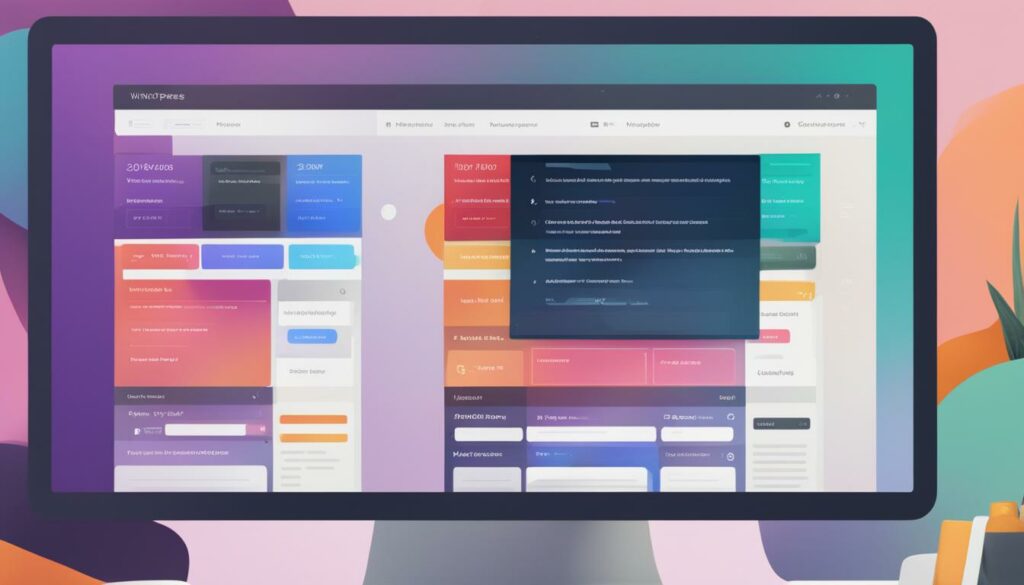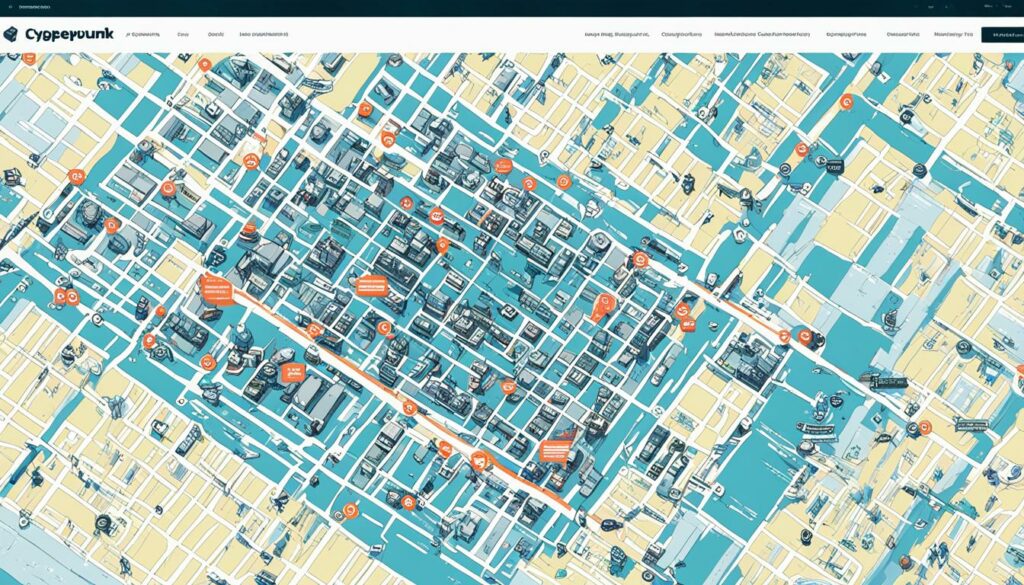Are you ready to take your website development skills to the next level? Look no further, because we have the ultimate guide to WordPress development that will transform you from a beginner to an expert in no time. WordPress has become the go-to platform for building websites, and with good reason. Its user-friendly interface, extensive customization options, and vast plugin library make it a powerful tool for creating stunning and functional websites. Whether you’re a web design newbie or a seasoned developer looking to expand your skillset, this guide will provide you with all the knowledge and resources you need to master WordPress development. From understanding the basics of WordPress installation and theme customization to diving deep into advanced techniques like plugin development and optimization, we’ve got you covered. Get ready to unleash your creativity and build professional websites that not only look great but also perform exceptionally well in search engine rankings. Let’s dive into the world of WordPress development together!
Key Takeaways:
- Improve website speed by optimizing WordPress for faster loading times.
- Increase WordPress performance with effective customization techniques.
- Enhance page loading speed to provide an exceptional user experience.
- Boost website speed by utilizing caching plugins and optimizing images.
- Optimize WordPress speed to improve SEO ranking and website visibility.
Understanding the basics of WordPress
WordPress is a widely-used content management system (CMS) that allows you to create and manage websites without any coding knowledge. It’s the go-to platform for building websites, powering over 40% of all websites on the internet. With its user-friendly interface and extensive customization options, WordPress is a powerful tool for creating stunning and functional websites.
WordPress is built on PHP and uses a MySQL database, which means it can be easily installed on any web hosting server that supports PHP and MySQL. To get started with WordPress, you’ll need a domain name and web hosting. Once your hosting is set up, you can install WordPress by following the step-by-step instructions provided by your hosting provider.
Once WordPress is installed, you’ll have access to the WordPress dashboard. This dashboard is your central hub for managing your website’s content, appearance, and functionality. From the dashboard, you can create and edit posts and pages, customize the appearance of your website using themes, and extend the functionality of your site with plugins.
Now that you have a basic understanding of WordPress, let’s delve deeper into the process of setting up a WordPress website and customizing it to fit your needs and brand identity.
Setting up a WordPress website
Now that you have WordPress installed, it’s time to set up your website. Here’s how you can get started:
Choose a theme
WordPress offers a wide range of free and premium themes to choose from. Select a theme that aligns with your website’s purpose and style. Whether you’re looking for a sleek and modern design or a more traditional look, there’s a theme for every taste. Take your time to explore different options and find the one that suits your needs.
Customize your theme
Once you’ve chosen a theme, you can customize it to make it unique to your brand. WordPress provides a built-in theme customizer that allows you to change colors, fonts, layouts, and more. Experiment with different customization options until you achieve the desired look and feel for your website.
Create pages
With WordPress, you can easily create and manage pages for your website. Common pages include the homepage, about page, contact page, and blog page. Think about the content you want to include on each page and organize it accordingly. By creating well-structured pages, you can provide a seamless user experience for your visitors.
Familiarize yourself with the WordPress dashboard
The WordPress dashboard is your control center for managing your website. Take some time to explore the different sections and features available. From the dashboard, you can customize your site, add new content, install plugins, and monitor your website’s performance. Becoming familiar with the dashboard will make managing your WordPress website a breeze.
Now that you’ve set up your WordPress website, you’re ready to start creating amazing content and engaging with your audience. Stay tuned for the next sections where we’ll dive deeper into theme customization, plugin installation, and website optimization.
Choosing the Right WordPress Theme
Choosing the right WordPress theme is crucial for the success of your website. A well-designed theme not only enhances the visual appeal of your site but also improves its performance and user experience.
When selecting a theme, consider factors such as design, responsiveness, customizability, compatibility with plugins, and support from the developer or marketplace. Take your time to research and choose a theme that aligns with your brand identity and meets your website’s specific needs.
Design: Look for a theme that reflects the aesthetic you want to achieve for your site. Whether it’s a modern, minimalistic design or a bold and vibrant layout, choose a theme that resonates with your target audience.
Responsiveness: Ensure that the theme is responsive, meaning it adapts to different screen sizes and devices. With the increasing use of mobile devices, responsive design is essential to provide a seamless user experience for your visitors.
Customizability: Consider the level of customization options offered by the theme. The ability to customize colors, fonts, layouts, and other elements can help you create a unique and personalized website.
Compatibility: Check if the theme is compatible with popular plugins that you may need to enhance your website’s functionality. Plugins such as SEO optimization, e-commerce integration, and contact forms can significantly enhance your site’s capabilities.
Support: Ensure that the theme developer or marketplace provides adequate support. This includes regular updates, documentation, and a responsive support team to assist you in case of any issues or questions.
Remember, the right WordPress theme can set the foundation for a successful website. Invest time in finding a theme that not only looks great but also offers the functionality and flexibility you need to create a stunning online presence.

When it comes to choosing the right WordPress theme, design, responsiveness, customizability, compatibility, and support are key factors to consider. A well-designed theme that is responsive, highly customizable, compatible with necessary plugins, and backed by reliable support can elevate your website to new heights.
Customizing your WordPress theme
Once you’ve chosen a theme, it’s time to unleash your creativity and customize it to reflect your brand and style. WordPress provides several customization options through the theme customizer, giving you the freedom to make your website unique and visually appealing. With a few simple clicks, you can transform the look and feel of your theme to match your exact preferences.
Using the theme customizer, you can easily change various elements of your theme, such as colors, fonts, layouts, and more. This intuitive tool allows you to see the changes in real-time, making the customization process seamless and enjoyable. Say goodbye to lengthy trial and error sessions or hiring expensive designers – WordPress puts the power in your hands.
“The theme customizer is a game-changer! It saves me so much time and effort in tweaking my theme to perfection. I can experiment with different colors, fonts, and layouts until I find the perfect combination that suits my brand.” – Sarah, WordPress enthusiast
If you have coding knowledge or hire a developer, you can take customization a step further by modifying the theme’s CSS or even adding custom code. This allows for complete flexibility and endless possibilities to achieve the desired look and functionality for your website. Whether you’re a coding whiz or just dip your toes in the coding world, WordPress welcomes all levels of expertise.
Don’t forget the power of plugins! WordPress boasts a vast library of plugins that can significantly enhance your theme’s customization options. From adding sliders and galleries to implementing advanced widgets and forms, plugins offer additional functionality that can take your website to the next level. Explore the plugin directory and discover the perfect tools to make your theme truly stand out.
Customizing options provided by the theme customizer:
- Colors: Easily change the color scheme of your theme to match your brand
- Fonts: Choose from a wide range of fonts to give your website a unique typography style
- Layouts: Customize the arrangement and structure of your website’s content
- Widgets: Add, remove, or rearrange widgets to tailor your layout and functionality
- Menus: Create custom menus and navigation structures to improve user experience
Take advantage of the theme customizer and plugins to unleash your creativity and make your WordPress theme truly your own. With endless customization options, you can create a website that not only looks stunning but also aligns perfectly with your brand and style.

Top Customization Plugins for WordPress:
| Plugin Name | Description |
|---|---|
| Elementor | A powerful page builder plugin that allows you to visually customize every aspect of your website |
| Advanced Custom Fields | Enhance your theme’s customizability and add advanced custom fields to your website |
| Slider Revolution | Create stunning sliders with unique animations and effects to showcase your content |
| Contact Form 7 | Easily create and manage beautiful contact forms to ensure seamless communication with your visitors |
Experiment, explore, and make your WordPress theme truly shine with the theme customizer and the wide range of plugins available. Cutomize your theme to reflect your brand and captivate your audience with a visually appealing website that sets you apart from the competition.
Adding functionality with plugins
One of the key advantages of using WordPress is its extensive plugin library, which allows you to enhance your website’s performance, security, SEO, and more. With the right combination of plugins, you can take your website to the next level and provide an exceptional user experience. Let’s explore some popular plugin categories and the plugins you can use to add functionality to your WordPress website.
SEO Plugin: Yoast SEO
When it comes to optimizing your website for search engines, Yoast SEO is a must-have plugin. It provides a range of features that help you optimize your content, meta tags, XML sitemap, and more. Yoast SEO offers insights and suggestions to improve your website’s SEO, making it easier for search engines to crawl and rank your pages.
Caching Plugin: WP Rocket
Website speed plays a crucial role in user experience and SEO. A caching plugin like WP Rocket helps improve your site’s loading times by creating static versions of your web pages. This reduces server load and enhances the overall performance of your website, resulting in faster page load times and happier visitors.
Security Plugin: Wordfence
Keeping your WordPress website secure is essential to protect it from potential threats. Wordfence is a comprehensive security plugin that offers features like firewall protection, malware scanning, brute-force attack prevention, and more. It helps safeguard your website and provides peace of mind.
Contact Form Plugin: Contact Form 7
For effective communication with your website visitors, a contact form is crucial. Contact Form 7 is a widely used plugin that allows you to create and manage contact forms easily. With its customizable fields and user-friendly interface, you can create professional-looking contact forms that integrate seamlessly with your website.
Backup Plugin: UpdraftPlus
Regular backups are vital to protect your website’s data and ensure quick recovery in case of any mishaps. UpdraftPlus is a top-rated backup plugin that simplifies the backup process. It allows you to schedule automatic backups, choose your preferred cloud storage provider, and restore your website with just a few clicks.

By carefully choosing and installing the necessary plugins for your website’s functionality, you can optimize its performance, improve SEO rankings, and enhance the overall user experience. Remember to regularly update your plugins to ensure compatibility and enjoy the full benefits they have to offer.
Understanding WordPress Security
While WordPress is a secure platform, it’s important to take steps to protect your website from potential security threats. By implementing the following best practices, you can significantly enhance the security of your WordPress website.
Regularly Update WordPress, Themes, and Plugins
Regularly updating WordPress, themes, and plugins to the latest versions is crucial to ensure you have the latest security patches and bug fixes. Staying up to date with these updates will help protect your website from potential vulnerabilities.
Use Strong Passwords and Limit Login Attempts
Using strong passwords for your WordPress admin and user accounts is essential. A strong password should consist of a combination of upper and lowercase letters, numbers, and special characters. Additionally, consider limiting the number of login attempts to prevent brute force attacks.
Enable Two-Factor Authentication
Two-factor authentication adds an extra layer of security to your WordPress login process. By requiring a verification code in addition to your password, you can significantly reduce the risk of unauthorized access to your website.
Regularly Backup Your Website
Regularly backing up your website is essential to protect against data loss. In the event of a security breach or website malfunction, having up-to-date backups ensures that you can quickly restore your website to a previous state.
“Investing time and effort into WordPress security measures is an investment in safeguarding your website and protecting your valuable data.”
By following these best practices and implementing robust security measures, you can strengthen the security of your WordPress website, keeping it protected from potential threats.
Website Security Checklist
| Security Measure | Description |
|---|---|
| Regularly Update WordPress | Keep your WordPress installation up to date with the latest version to ensure you have the latest security patches. |
| Update Themes and Plugins | Regularly update your themes and plugins to minimize the risk of vulnerabilities. |
| Use Strong Passwords | Create strong, unique passwords for your WordPress admin and user accounts. |
| Limit Login Attempts | Set a limit on the number of login attempts allowed to prevent brute force attacks. |
| Enable Two-Factor Authentication | Add an extra layer of security to your WordPress login process. |
| Regularly Backup Your Website | Create regular backups of your website to protect against data loss. |
Optimizing your WordPress website for SEO
Search engine optimization (SEO) plays a crucial role in improving the visibility of your website in search engine rankings. By implementing effective SEO strategies, you can attract more organic traffic and increase your chances of reaching the top search results. As a WordPress user, you have access to built-in features that make your website SEO-friendly, such as clean URLs and customizable meta tags. However, to truly optimize your site for search engines, it’s recommended to install an SEO plugin like Yoast SEO or All in One SEO Pack.
An SEO plugin offers a range of features and functionalities that can significantly boost your website’s performance in search engine rankings. Some key features include:
- Keyword optimization: The plugin allows you to optimize your content by suggesting relevant keywords and analyzing keyword density.
- Meta tags customization: You can easily customize meta titles and descriptions for each page or post, making it easier for search engines to understand your content and display accurate snippets in search results.
- XML sitemap generation: The plugin automatically generates an XML sitemap for your website, which helps search engines crawl and index your site more efficiently.
- Content analysis: With the help of the plugin, you can analyze the readability and SEO-friendliness of your content, ensuring it meets the highest standards.
While an SEO plugin is a powerful tool for optimizing your website, it’s important to remember that content quality plays a significant role in SEO as well. To improve your search engine rankings, focus on creating valuable, informative, and engaging content that resonates with your target audience. Incorporate relevant keywords in your content naturally and strategically to enhance its visibility to search engines.
In addition to content optimization, site speed is another critical factor in SEO. A fast-loading website not only improves user experience but also earns favor with search engines. To optimize your WordPress website for site speed, consider implementing the following strategies:
- Use caching plugins: Caching plugins like WP Rocket and W3 Total Cache can significantly improve your website’s loading time by storing static versions of your website’s pages.
- Optimize images: Compress and resize images to reduce their file size without compromising on quality. This helps reduce page load times.
- Improve server response time: Choose a reliable web hosting provider with fast server response times to ensure your website loads quickly.
By focusing on SEO optimization, content quality, and site speed, you can significantly improve your WordPress website’s visibility in search engine rankings. Implementing these strategies can lead to higher organic traffic, increased conversions, and overall success in your online endeavors.
So, take the necessary steps to optimize your WordPress website for SEO and start reaping the benefits of improved search engine visibility and better user experience. Your website will be well-positioned to attract more visitors and achieve your online goals.
Conclusion
Congratulations! You have now gained a comprehensive understanding of WordPress customization and optimization techniques. By following the steps outlined in this guide, you can personalize your WordPress website to align with your brand identity, enhance its performance, improve SEO ranking, and deliver an exceptional user experience.
Remember to regularly update your WordPress installation, themes, and plugins to ensure maximum security, compatibility, and access to the latest features. Additionally, make use of various customization options and experiment with different plugins to find the perfect combination for your website.
With the knowledge you have acquired, you are now well-equipped to unlock the full potential of WordPress and create a unique and successful website that stands out from the competition. Embrace the power of WordPress website customization to optimize your website’s performance, improve its SEO ranking, and delight your users with an exceptional online experience. Start implementing these strategies today and watch your website flourish!
FAQ
Q: How can I improve the speed of my WordPress site?
A: To boost the speed of your WordPress site, you can optimize it by using caching plugins, optimizing images, and improving server response time. Additionally, choosing a reliable hosting provider and regularly updating your WordPress, themes, and plugins can also help improve website speed.
Q: What is the best way to enhance the performance of my WordPress website?
A: To improve the performance of your WordPress website, you can optimize it by using caching plugins, minimizing the use of external scripts, optimizing images, and reducing the number of plugins installed. It is also important to choose a lightweight and responsive theme and regularly update your WordPress, themes, and plugins.
Q: How can I optimize the loading time of my WordPress site?
A: To optimize the loading time of your WordPress site, you can use techniques such as caching, minifying CSS and JavaScript files, optimizing images, and enabling browser caching. You can achieve this by using caching plugins, optimizing your theme’s code, and compressing images to reduce their file size.
Q: What are some ways to speed up my WordPress site?
A: To speed up your WordPress site, you can choose a fast and reliable hosting provider, use a lightweight and optimized theme, minimize the use of plugins, optimize images, enable caching, and utilize a content delivery network (CDN) to distribute your website’s content across multiple servers worldwide.
Q: How can I improve the loading time of my WordPress pages?
A: To enhance the loading time of your WordPress pages, you can optimize them by using caching plugins, optimizing images, minimizing the use of external scripts and CSS files, and reducing the number of database queries. It’s also important to choose a fast and reliable hosting provider for better server response time.
Q: What should I do to boost the speed of my WordPress website?
A: To boost the speed of your WordPress website, you can take several steps such as choosing a lightweight and optimized theme, optimizing images, using caching plugins, enabling browser caching, minimizing CSS and JavaScript files, and optimizing your hosting environment for better performance.
Q: Are there any plugins specifically designed to improve the speed of WordPress websites?
A: Yes, there are many plugins available that can enhance the speed of WordPress websites. Some popular options include WP Rocket, W3 Total Cache, and Autoptimize. These plugins provide features such as caching, minification, and optimization of CSS and JavaScript files to improve website speed.
Q: Is it necessary to optimize the speed of my WordPress site?
A: Yes, optimizing the speed of your WordPress site is crucial for providing a good user experience and improving search engine rankings. Studies have shown that faster websites tend to have lower bounce rates, higher conversion rates, and better search engine visibility.
Q: How can I optimize my WordPress site for better performance?
A: To optimize your WordPress site for better performance, you can use techniques such as caching, minifying CSS and JavaScript files, optimizing images, enabling browser caching, and reducing the number of HTTP requests. It’s also important to choose a fast and reliable hosting provider.












